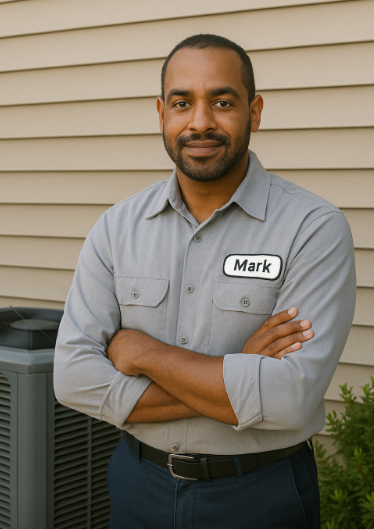When it comes to air conditioning, many homeowners have a simple assumption: bigger is better. They want the biggest AC they can get, thinking that a massive unit will cool their home faster, better, and with less effort. But as someone who’s installed and serviced HVAC systems for over 30 years, I can tell you that the largest AC unit isn’t always the smartest choice. In fact, oversizing can bring a slew of problems that affect comfort, efficiency, and your wallet.
In this post, I’m going to break down what you really need to know about high capacity cooling—including the allure of high BTU AC systems—why bigger isn’t always better, and why a right-sized system like the Goodman 3 Ton 14.5 SEER2 R-32 Bundle often offers better value and comfort.
What Does “Biggest Air Conditioner” Really Mean?
When folks say “biggest air conditioner,” they’re usually talking about the unit’s cooling capacity measured in BTUs (British Thermal Units) or tons. One ton equals 12,000 BTUs of cooling capacity, so a 3-ton unit has about 36,000 BTUs. The biggest residential units on the market can top out around 5 tons (60,000 BTUs), while commercial systems can be far larger.
You may have heard of high BTU AC units that pack 100,000 BTUs or more—these are designed for large commercial spaces, warehouses, or industrial settings, not typical homes. The U.S. Department of Energy’s guide to air conditioners clearly recommends matching capacity to your home’s specific needs, not just going for the biggest unit available.
Why Oversizing Is a Problem
It might sound counterintuitive, but buying the biggest AC unit for your house often results in discomfort and higher costs. Here’s why:
1. Short Cycling and Inefficiency
An oversized air conditioner cools the air so quickly that it cycles on and off repeatedly. This "short cycling" wastes energy, increases wear on components, and reduces dehumidification—making your home feel cold but clammy. Energy Vanguard explains how oversizing can hurt efficiency and comfort.
2. Higher Energy Bills
Running a bigger unit than necessary means you’re paying for capacity you don’t need. These units consume more electricity, and short cycling drives your bills up without improving comfort.
3. Poor Humidity Control
Air conditioners remove heat and moisture. Oversized units don’t run long enough to effectively remove humidity, which can leave your home feeling sticky. This article from Smart AC Solutions highlights how proper sizing is essential for indoor air quality.
How to Determine the Right Size for Your Home
The biggest air conditioner isn’t always the best. Instead, focus on right-sizing your unit based on your home’s specific needs.
Here’s how:
-
Square Footage: Calculate the area you want to cool. As a general rule, you need about 20 BTU per square foot.
-
Insulation and Windows: Well-insulated homes with energy-efficient windows need less cooling.
-
Climate: Hotter, more humid climates require slightly more capacity.
-
Home Layout: Two-story homes, vaulted ceilings, and open floor plans affect load.
For the most accurate sizing, get a professional Manual J load calculation performed. This accounts for all the variables and ensures your system will work efficiently. You can learn more about this process at HVAC.com’s guide on load calculations.
Why the Goodman 3 Ton 14.5 SEER2 R-32 Bundle Stands Out
Instead of chasing the biggest air conditioner, consider what you really need for your home’s size and layout. For many mid-sized homes, a 3-ton system is perfect. The Goodman 3 Ton 14.5 SEER2 R-32 Bundle strikes a great balance between capacity, efficiency, and environmental responsibility.
-
Energy Efficiency: Its 14.5 SEER2 rating keeps your energy bills reasonable while delivering consistent comfort.
-
Eco-Friendly Refrigerant: R-32 has a lower global warming potential than older refrigerants, making this unit a greener choice.
-
Quiet Operation: Unlike large commercial units that can be noisy, this system runs smoothly and quietly.
-
Reliability: Goodman’s proven reputation means fewer repairs and longer system life.
For more on choosing a high-efficiency, environmentally friendly air conditioner, check out the EPA’s ENERGY STAR program.
When Might You Need the Largest AC Unit?
There are exceptions. Large homes (5,000+ square feet), commercial spaces, or industrial applications sometimes require very high-capacity units. These are specialized installations, usually custom-designed by professionals.
If you own a commercial building or a large estate, talk to an HVAC contractor about your options. The largest air conditioner isn’t always a single massive unit. Often, multiple smaller units staged together or zoned properly deliver better results..
Final Thoughts: Size Smart, Not Just Big
In my experience, the key to comfort and efficiency lies in choosing the right size system—not the biggest one. Oversized units cause short cycling, waste energy, and don’t control humidity well. Instead, use a properly sized system like the Goodman 3 Ton 14.5 SEER2 R-32 Bundle to achieve year-round comfort, lower utility bills, and peace of mind.
If you’re shopping for an air conditioner, remember: bigger isn’t always better. Get your home’s cooling needs assessed by a professional, and invest in a quality system designed to fit those needs perfectly.







